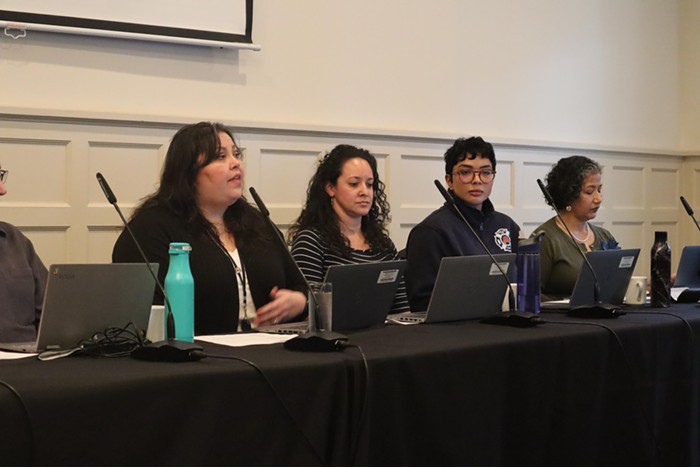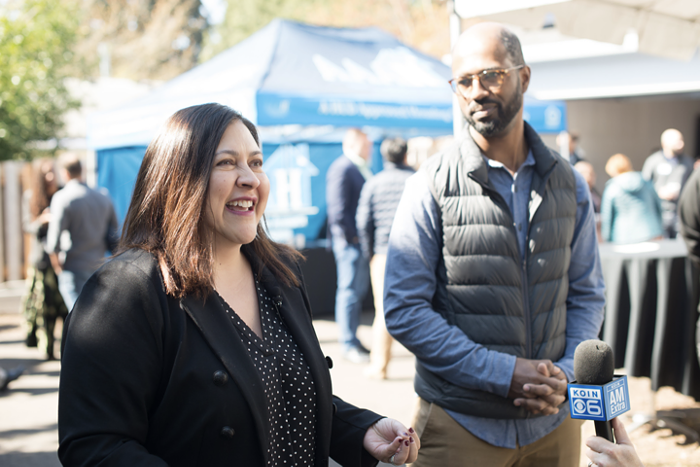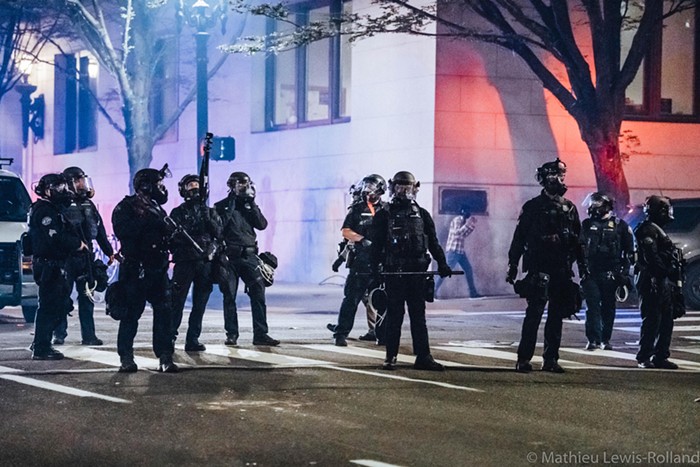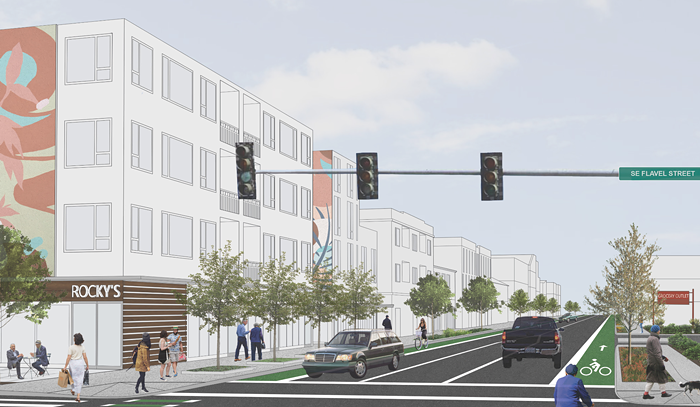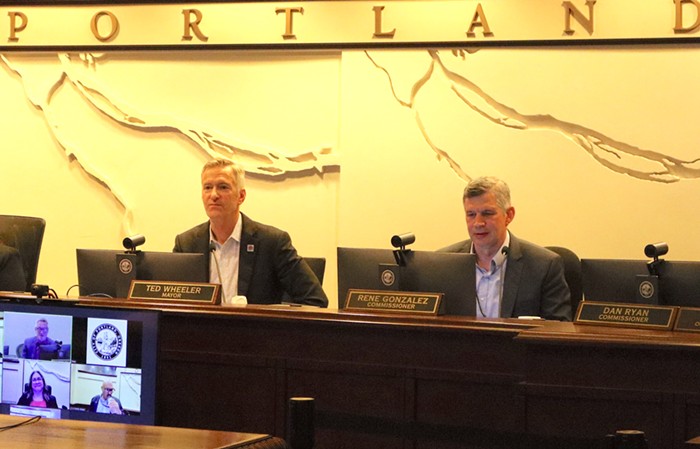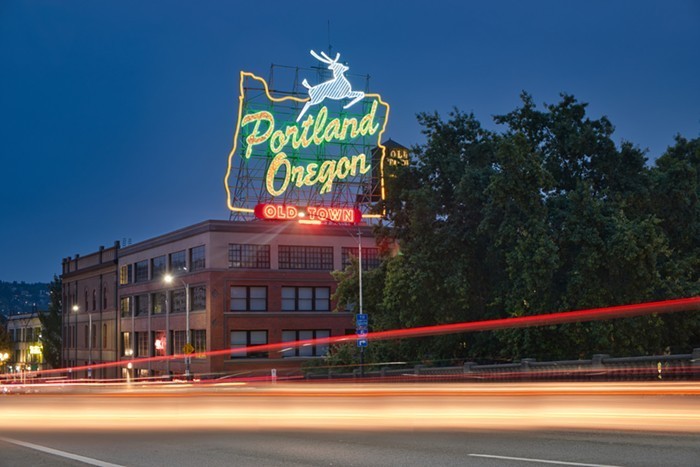I went to the Portland Plan Workshop for East Portland Saturday morning to hear what neighbors had to say about their future. Sarah Mirk wrote a couple weeks ago about the state of East Portland, which has a lack of infrastructure dating back through years of underfunding.
The meeting started with some grounding: 45 people showed up to the meeting, 90 percent of them white and 0 percent black, to discuss the future of an area with 27 percent non-white residents (a number that does not include white immigrants who may not speak English).
Mayor Sam Adams had this to say: "It is unlikely that we are going to have new money to invest in the issues we discuss today."
The Portland Plan is a wide-reaching set of goals 25 years. The Plan has a large focus on walkability and the "20-minute neighborhood" model with which Sam Adams is so deeply in love.
Infrastructure is lacking in East Portland; including sidewalks and parks. Less than 5% of parks funding goes east of 82nd, where the population is dense due to the number affordable housing apartments.Unfortunately, East Portland has high barriers to fitting into the 20-minute neighborhood plan. "The primary focus of our discussion was the 20-minute neighborhood model," said a East Portland resident presenting his small group's ideas. "The main problem being that, in East Portland, that model is essentially illegal."
The 20-minute neighborhood is one in which you can walk or bike to food, entertainment, transit, and so on—but in East Portland, a balance between residential and commercial properties is difficult due to zoning restrictions.
East Portland is zoned mostly as high-density residential, meaning that apartments can move in without review but businesses can’t. "Most of the areas that you would think of as commercial areas, particularly along 122nd, are actually zoned residential, meaning that it's difficult for businesses to move in," said Jean DeMaster, Executive Director of Human Solutions.
DeMaster had an additional suggestion for the city: PDC should bring businesses to East Portland when they are looking to move somewhere in the city. There are places in Lents and Gateway that have spaces for businesses, and in East Portland the land is cheaper. "We need marketing for this area so when businesses locate in Portland, they come here."
That will, of course, depend on zoning regulations, which were created many years ago. "It would take a major overhaul of the zoning codes, but it's not set in stone," said DeMaster.
"This part of town lacks infrastructure and funding, but I can tell you that every part of town feels that way," said Adams.
There was also a great big discussion of equity: something that has "come to infuse the entire discussion" of the Portland Plan. Amanda Fritz said that there have only been 2 people of color on city council in its 158-year history. Only 26 percent of the total population of Portland is non-white.The city is becoming more diverse, and 45 percent of school students are students of color. Adams expects the city to soon become 50 percent white and 50 percent communities of color. "How are we going to make sure we have a Portland Plan that respects all people?" asked Adams.
“Livability” was another focus of Saturday's workshop. The school board members and non-profit workers discussing housing agreed that it was important to not bring more low-income housing to East Portland, but instead raise the quality of the current housing.
The group discussed sub-standard housing in the area and expressed yearning for design review of the apartments before they went up. “Our schools are being pushed to their limits. We need diversity of incomes,” said Frieda Christopher, a David Douglas school board member. Free and reduced lunch in East Portland has increased dramatically, up to 75 to 80 percent of David Douglas students.
Ata Mahagheh, an appraiser who lives in East Portland, said that apartments should converted into condos, as ownership makes people respect their properties more. All agreed that increasing home ownership, particularly among people of color, is an important issue. "We really do not need more development here," said Mohaghegh, who also said that the inability for condos to sell is a short-term thing, but when that ends demand will return.
Instead of attracting more middle and high income people to the area to create this balance, DeMaster suggests wealth-building programs for those who are already living in East Portland. "Many people here are living below the poverty line. We want to work on jobs programs and economic opportunities programs for these people."
"East Portland needs to have a larger share of programs to combat poverty, because we have a larger portion of the poverty here," said DeMaster.


